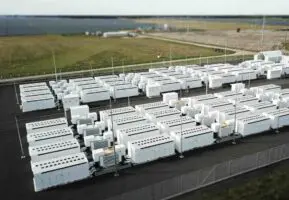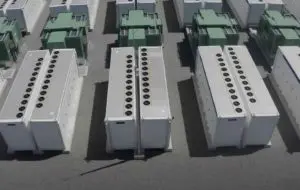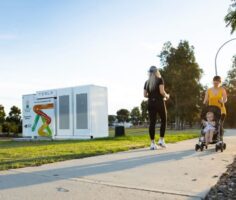AGL Energy says Australia needs to start building its own wind and solar components if it is dodge the supply chain blockages and delays that threaten to derail the country’s switch from coal to renewables.
In a speech to the Australian Energy Week conference in Melbourne, chief operating officer Markus Brokhof said that if Australia wants to make sure its ports are not choked with renewable energy imports, it has to revive its manufacturing sector to build some components locally.
“The manufacturing industry has to come back to Australia,” he said.
“Otherwise we will not solve the logistical challenge which we have going forward to do this transition, because all harbours will be fully booked in the future when it comes to this huge equipment which we have to move around the world, particularly when it comes to the large towers.”
Brokhof also repeated the company’s concerns about state government intervention in the energy market, and the effective balkanisation of energy policy that emerged due to a lack of federal government policies over the last decade.
He was particularly concerned about the creation of the State Energy Corporation in Victoria, where AGL owns one of the last remaining brown coal generators, and where the state is aiming for 95 per cent renewables by 2035.
“I think it’s clear if [the energy transition] is not properly orchestrated, if we are not doing this all together, government, industry, [with] no orchestrator, then we are going [to fall] off a cliff,” he says.
It means that while the likes of AGL will participate in driving the energy transition, it will not be responsible for energy security, with Brokhof inferring that this weight now lies with the new state organisations
The rise of state-based companies will also affect foreign investment, he says, at a time when Australia is already losing renewable investment dollars to the US and Europe, where considerable subsidies for new energy industries are sucking capital — and equipment and other resources — away from smaller geographies.
Don’t come crying that power isn’t cheap
In addition to foreign investment drying up, rising costs of equipment is causing headaches for developing new assets.
“You’re speaking now about $2.8 million to $3.2 million per megawatt for wind, which is quite a substantial lift up in costs for wind turbines,” Brokhof says.
“Also the increase in battery costs is quite sizeable. The key drivers are the raw materials, particularly when it comes to batteries, and a lot of battery suppliers are already indexing their battery cost to metals and minerals in order to shift the exposures or risk to the offt-aker and the buyer of batteries.
“If somebody believes the transition is for free, good luck. It’s not for free and [if] you believe that will lead to cheaper energy, good luck.”
AGL is aiming to build 12.2 gigawatts (GW) of storage and generation by 2036, split into 6.3 GW of renewable energy and 5.9 GW of storage, which includes investing in several R&D projects.
The company anticipates the bill for this to be in the region of $20 billion, with much of the firming capacity paid for from AGL’s own cash.
Brokhoff says 5 GW is slated for commissioning by 2030 with the remainder to come in the following six years, but for any of this to happen he warned that the transmission “fleet” needs to be ready — not just to move electricity, but also for the company to access the investment required to build the projects.
AGl is planning 20 more wind farms of similar size to the 453MW Coopers Gap farm, eight solar farms comparable to the 102MW Nyngan solar project, 14 new batteries sized at the scale of the 250MW Torrens Island version, and eight long-duration storage, biofuel or hydrogen project at the scale of the 250MW Muswellbrok pumped hydro project, which would have eight hours of storage capacity.
It is also looking to start energy hubs, supplying the energy infrastructure and creating new revenue streams with which ti finance those expansion ambitions, such as using renewable energy to make hydrogen that can be sold on to fertiliser plants.










